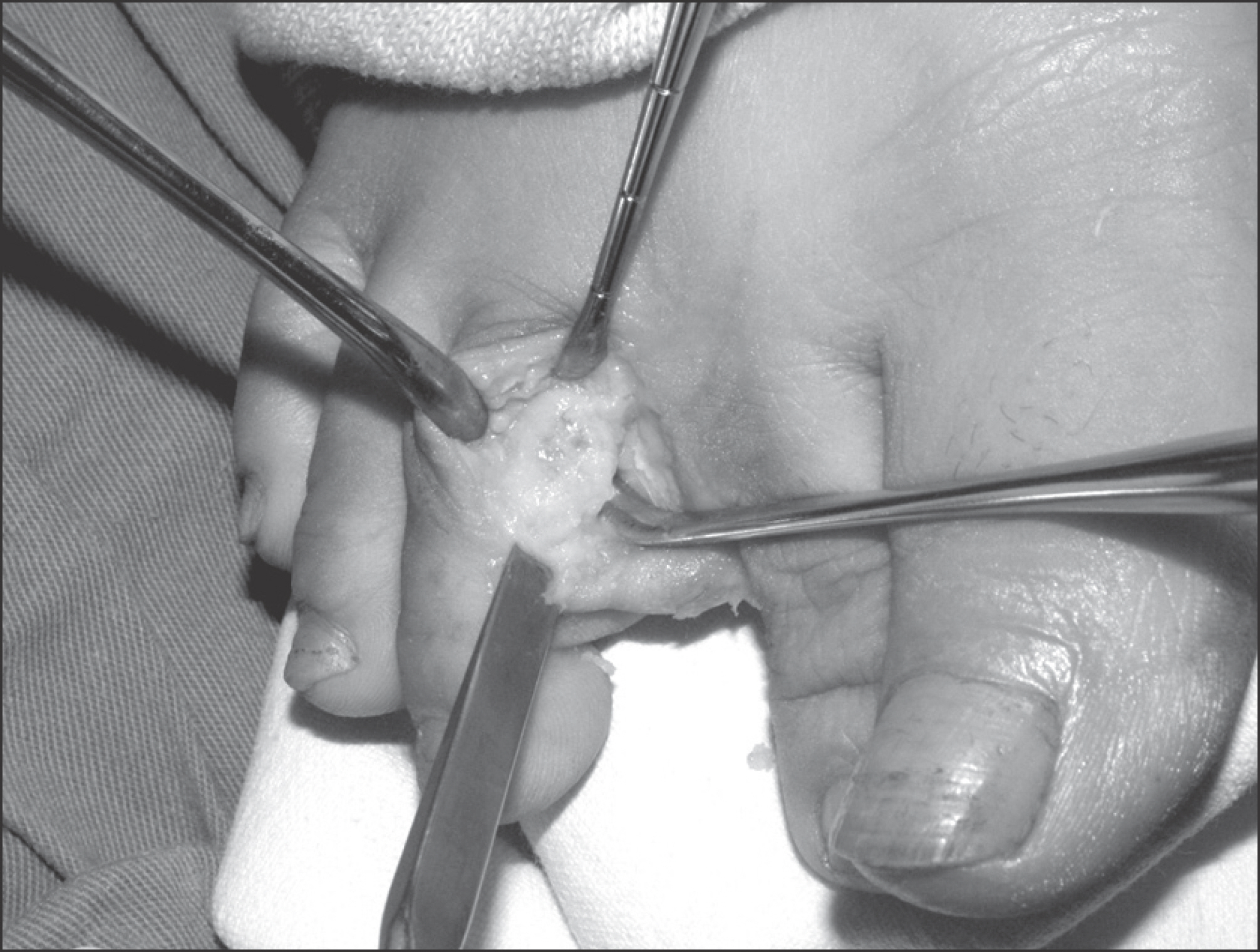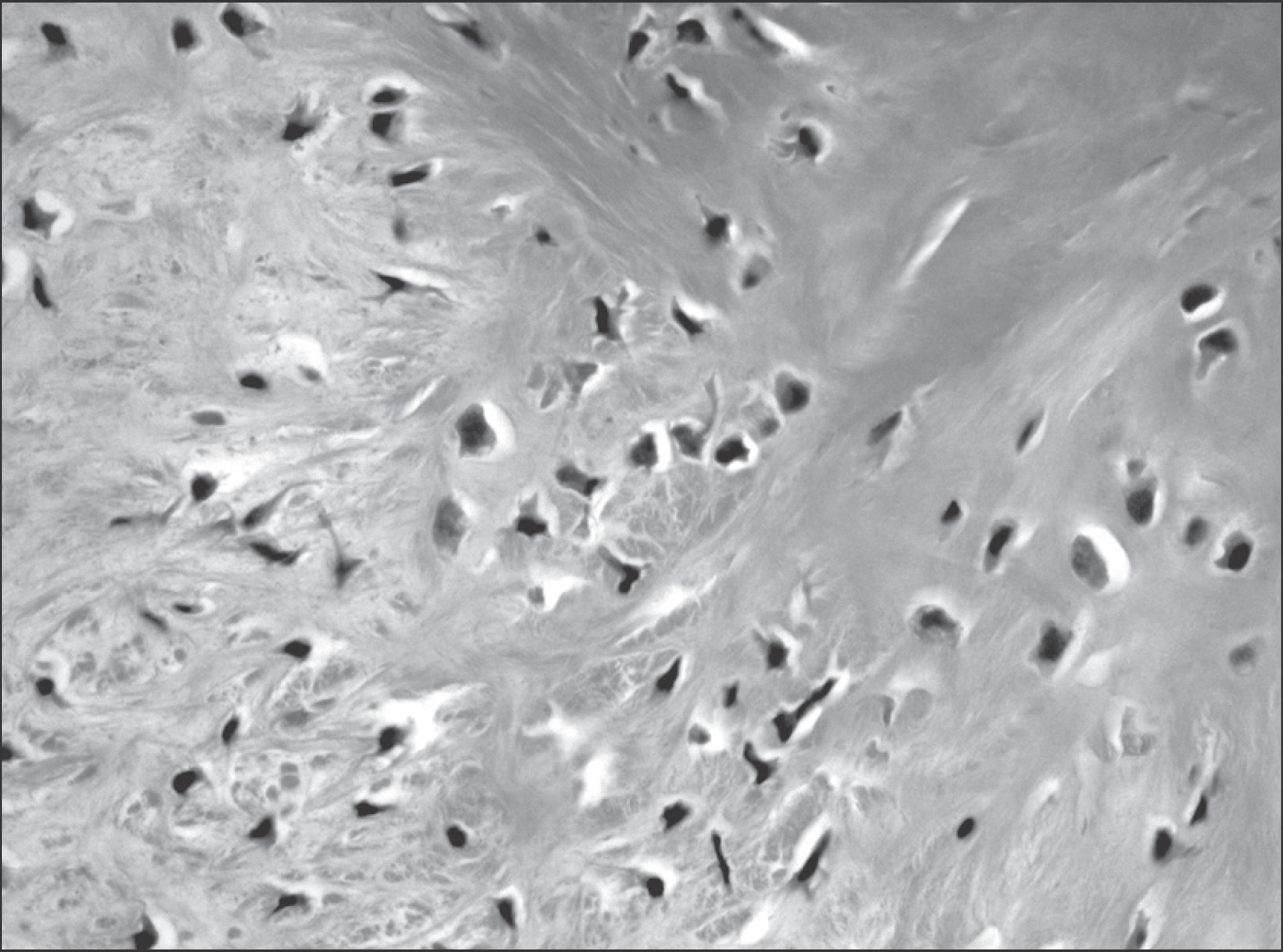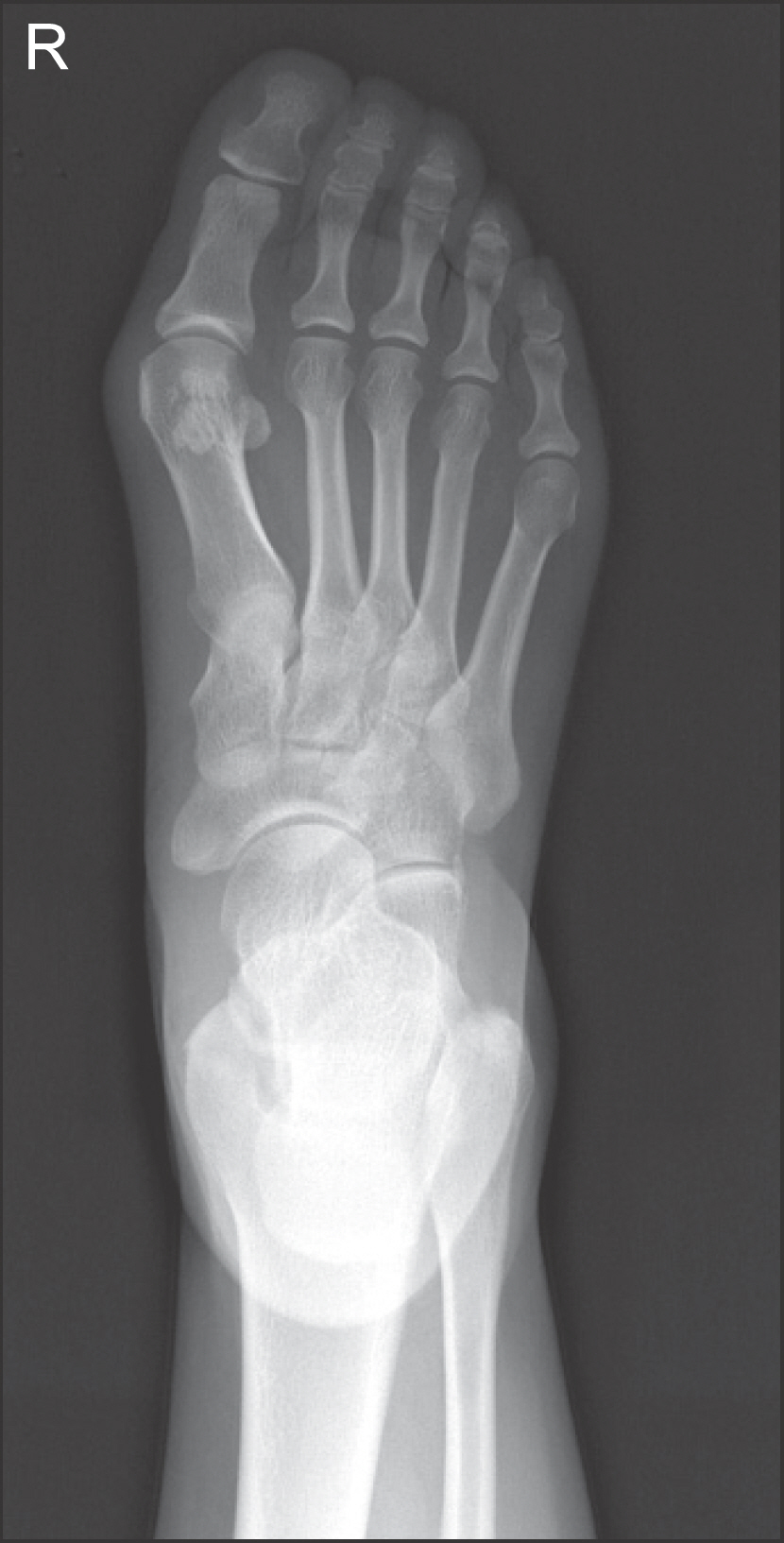J Korean Bone Joint Tumor Soc.
2011 Dec;17(2):91-94. 10.5292/jkbjts.2011.17.2.91.
Bizarre Parosteal Osteochondromatous Proliferation in the Proximal Phalanx of the Third Toe: A Case Report
- Affiliations
-
- 1Department of Orthopedic Surgery, Sung-Ae Hospital, Seoul, Korea. jsj232@naver.com
- 2Department of Orthopedic Surgery, Kwangmyung Sung-Ae Hospital, Gwangmyeong, Korea.
- KMID: 1444795
- DOI: http://doi.org/10.5292/jkbjts.2011.17.2.91
Abstract
- Bizarre parosteal osteochondromatous proliferation (BPOP) otherwise known as Nora's lesion, is a benign surface tumor of the small tubular bone of the hands and feet with high probability of local recurrence. The report of BPOP in the foot is very rare in our country. We report a case of BPOP of proximal phalanx of right 3rd toe in 44-year-old female, successfully managed by en-bloc marginal excision with a review of the literatures.
Figure
Cited by 1 articles
-
Diagnosis and Treatment of Bizarre Parosteal Osteochondromatous Proliferation
Duk-Seop Shin, Han Seok Yang, Ho Dong Na, Seung Min Ryu
J Korean Orthop Assoc. 2018;53(1):58-65. doi: 10.4055/jkoa.2018.53.1.58.
Reference
-
References
1. Nora FE, Dahlin DC, Beabout JW. Bizarre parosteal osteochondromatous proliferation of hands and feet. Am J Surg Pathol. 1983; 7:245–50.2. Meneses MF, Unni KK, Swee RG. Bizarre parosteal osteochondromatous proliferation of bone (Nora's lesion). Am J Surg Pathol. 1993; 17:691–7.
Article3. Chung DW, Lee JH, Bae SC. Bizarre parosteal osteochondromatous proliferation (Nora's lesion): a case report. J Korean Soc Surg Hand. 2002; 7:101–4.4. Kang HJ, Cho NH, Park JH, Ha JW. Nora's lesion in the foot. J Korean Foot Ankle Soc. 1998; 2:48–51.5. Kim KT, Lee S, Kim JH, Ji MK, Park JS, Park KY. Bizarre parosteal osteochondromatous proliferation (Nora's-lesion) which affects humeral shaft: a case report. J Korean Bone & Joint Tumor Soc. 2004; 10:142–6.6. Shin BK, Cho HD, Yum BW, Choi JS, Kim CH. Bizarre parosteal osteochondromatous proliferation of the femur (Nora's lesion): a case report. J Korean Bone & Joint Tumor Soc. 1999; 5:178–81.7. Spjut HJ, Dorfman HD. Florid reactive periositis of the tubular bones of the hands and feet. A benign lesion which may simulate osteosarcoma. Am J Surg Pathol. 1981; 5:423–33.8. Breidahl WH, Wylie EJ. Bizarre parosteal osteochondromatous proliferation of the hands and feet. Australas Radiol. 1995; 39:401–4.
Article9. Twiston Davies CW. Bizarre parosteal osteochondromatous proliferation in the hand. A case report. J Bone Joint Surg Am. 1985; 67:648–50.
Article
- Full Text Links
- Actions
-
Cited
- CITED
-
- Close
- Share
- Similar articles
-
- Bizarre Parosteal Osteochondromatous Proliferation of Middle Phalanx: A Case Report
- A Case of Subungual Bizarre Parosteal Osteochondromatous Proliferation of the Toe
- Bizarre Parosteal Osteochondromatous Proliferation: A Report of One Case
- Parosteal Lipoma Associated with Underlying Recurrent Bizarre Parosteal Osteochondromatous Proliferation (Nora's Lesion) of the Hand
- Aberrant Chromosomal Alterations in Bizarre Parosteal Osteochondromatous Proliferation (Nora's Lesion) of Hand: A Case Report







